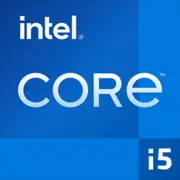Basic
Intel
Label Name
Intel
January 2024
Launch Date
January 2024
Desktop
Platform
Desktop
i5-14500
Model Name
?
The Intel processor number is just one of several factors - along with processor brand, system configurations, and system-level benchmarks - to be considered when choosing the right processor for your computing needs.
i5-14500T
Raptor Lake Refresh
Code Name
Raptor Lake
CPU Specifications
14
Total Cores
?
Cores is a hardware term that describes the number of independent central processing units in a single computing component (die or chip).
14
20
Total Threads
?
Where applicable, Intel® Hyper-Threading Technology is only available on Performance-cores.
20
6
Performance-cores
6
8
Efficient-cores
8
-
Max Turbo Frequency
?
Max Turbo Frequency is the maximum single-core frequency at which the processor is capable of operating using Intel® Turbo Boost Technology and, if present, Intel® Turbo Boost Max Technology 3.0 and Intel® Thermal Velocity Boost. Frequency is typically measured in gigahertz (GHz), or billion cycles per second.
4.8 GHz
2.6 GHz
Performance-core Base Frequency
-
1.8 GHz
Efficient-core Base Frequency
-
5 GHz
Performance-core Max Turbo Frequency
?
Maximum P-core turbo frequency derived from Intel® Turbo Boost Technology.
-
80K per core
L1 Cache
-
2MB per core
L2 Cache
-
24MB shared
L3 Cache
24 MB
LGA-1700
CPU Socket
?
The socket is the component that provides the mechanical and electrical connections between the processor and motherboard.
FCLGA1700
Intel 7
Technology
?
Lithography refers to the semiconductor technology used to manufacture an integrated circuit, and is reported in nanometer (nm), indicative of the size of features built on the semiconductor.
Intel 7
65 W
TDP
35 W
-
Processor Base Power
?
The time-averaged power dissipation that the processor is validated to not exceed during manufacturing while executing an Intel-specified high complexity workload at Base Frequency and at the junction temperature as specified in the Datasheet for the SKU segment and configuration.
35 W
-
Maximum Turbo Power
?
The maximum sustained (>1s) power dissipation of the processor as limited by current and/or temperature controls. Instantaneous power may exceed Maximum Turbo Power for short durations (<=10ms). Note: Maximum Turbo Power is configurable by system vendor and can be system specific.
92 W
100°C
Max. Operating Temperature
?
Junction Temperature is the maximum temperature allowed at the processor die.
100°C
-
PCI Express Version
?
PCI Express Revision is the supported version of the PCI Express standard. Peripheral Component Interconnect Express (or PCIe) is a high-speed serial computer expansion bus standard for attaching hardware devices to a computer. The different PCI Express versions support different data rates.
5.0 and 4.0
Memory Specifications
DDR5-6000
Memory Type
?
Intel® processors come in four different types: Single Channel, Dual Channel, Triple Channel, and Flex Mode. Maximum supported memory speed may be lower when populating multiple DIMMs per channel on products that support multiple memory channels.
Up to DDR5 4800 MT/s Up to DDR4 3200 MT/s
128GB
Max Memory Size
?
Max memory size refers to the maximum memory capacity supported by the processor.
192 GB
2
Memory Channels
?
The number of memory channels refers to the bandwidth operation for real world application.
2
GPU Specifications
True
Integrated Graphics Model
?
An integrated GPU refers to the graphics core that is integrated into the CPU processor. Leveraging the processor's powerful computational capabilities and intelligent power efficiency management, it delivers outstanding graphics performance and a smooth application experience at a lower power consumption.
Intel® UHD Graphics 770
-
Graphics Frequency
?
Graphics max dynamic frequency refers to the maximum opportunistic graphics render clock frequency (in MHz) that can be supported using Intel® HD Graphics with Dynamic Frequency feature.
1.55 GHz
Benchmarks
Geekbench 6 Single Core
Core i5-14500
2680
+5%
Core i5-14500T
2561
Geekbench 6 Multi Core
Core i5-14500
14623
+15%
Core i5-14500T
12754
Geekbench 5 Single Core
Core i5-14500
1863
+6%
Core i5-14500T
1750
Geekbench 5 Multi Core
Core i5-14500
10463
+13%
Core i5-14500T
9236
Passmark CPU Single Core
Core i5-14500
4016
+2%
Core i5-14500T
3939
Passmark CPU Multi Core
Core i5-14500
32734
+46%
Core i5-14500T
22398
Related CPU Comparisons
Share in social media
Or Link To Us
<a href="https://cputronic.com/cpu/compare/intel-core-i5-14500-vs-intel-core-i5-14500t" target="_blank">Intel Core i5-14500 vs Intel Core i5-14500T</a>


